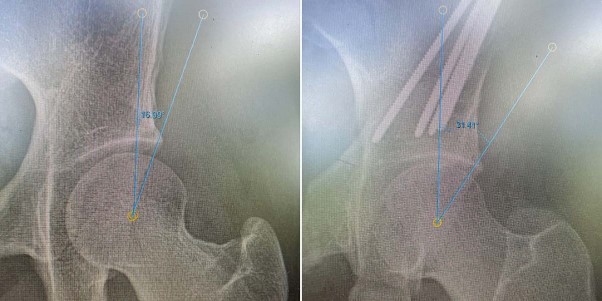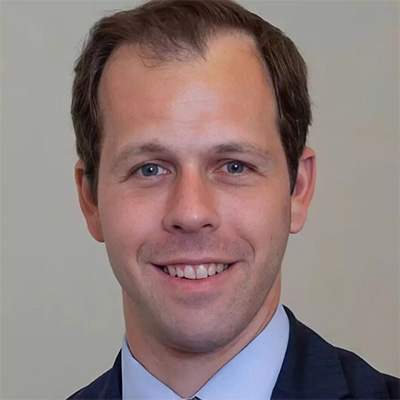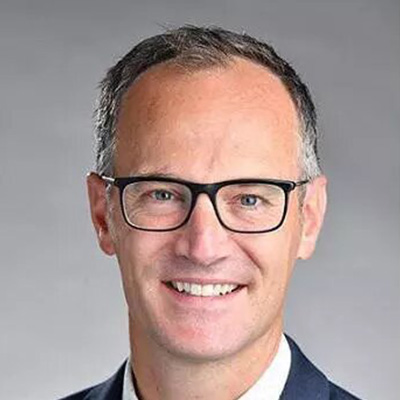Through the Department of Orthopedic Surgery at NewYork-Presbyterian/
“One of the challenging, and yet exciting, aspects of hip preservation, particularly in young patients, is that there isn’t one clear option for every patient. We have to approach each patient individually, and then, as a team, determine the best course of action,” says pediatric orthopedic surgeon Samuel K. Van de Velde, MD, PhD, of his collaboration with sports medicine specialist and hip preservation surgeon Robert A. Christian, MD, MBA.
Dr. Van de Velde specializes in the diagnosis and treatment of hip pathology in children and young adults. He has particular expertise in specialized surgical interventions for hip and lower extremity disorders. Dr. Christian, an orthopedic sports medicine surgeon specializing in the operative and nonoperative treatment of athletes of all ages and skill levels, has particular expertise in arthroscopic hip preservation to address the causes of femoroacetabular impingement, labral tears, and other periarticular hip complaints. Dr. Van de Velde and Dr. Christian work in concert to help their younger patients through individually tailored assessments to identify the etiology and develop a treatment plan that will optimize their outcomes.
Dr. Van de Velde and Dr. Christian observe that they are seeing younger adults, defined here as under 40, for evaluation of hip pathology more than ever before. They attribute this not only to a variety of physical factors such as year-round athletics and prolonged sitting, but also to broader patient awareness and advances in the field.
In Columbia’s Department of Orthopedic Surgery, a pediatric orthopedic surgeon and a sports medicine surgeon combine their individual specialties and skills to optimize care for young patients with hip disorders.
“The initial goal of our hip preservation team is to identify hips at risk,” says Dr. Christian. “The conditions we take care of are at risk for progressing to arthritis so we want to enhance the related biomechanics to preserve the longevity of a patient’s native hip joint. In some instances, by addressing a condition such as hip dysplasia early – ideally, as soon as the hip is symptomatic – the need for a total hip replacement might be delayed up to 20 years. And it is not only about delaying a replacement, but also averting revision surgery down the line.”
“Coming to see us doesn’t mean the patient is signing up for hip surgery, but rather to undergo a complete evaluation and a discussion of treatment options to get them back to their desired activity or sport as soon as possible in the least invasive way,” says Dr. Christian. “This starts with nonoperative methods that may include anti-inflammatory medication, a course of physical therapy to optimize glute and posterior chain strengthening, and minimizing impingement and impingement-driven motor patterns. We will also do a diagnostic and therapeutic hip injection to both confirm the location of pain and, prognostically, to make sure that we can estimate how a patient may feel after surgery.”
Throughout the evaluation and treatment process, Dr. Christian and Dr. Van de Velde consider the patients’ quality of life at every turn. “We provide a unique approach to ensure we look at the breadth of hip preservation options to provide optimal treatment tailored to patients, taking into account not only pathology and anatomy, but to enable patients to return to their desired activities or sport in the most expeditious way possible,” says Dr. Christian.
“In all cases, we always discuss what is the best step forward and together we come up with a patient-specific plan,” notes Dr. Van de Velde. “If a combined treatment approach is indicated, Dr. Christian will start with a hip arthroscopy to address the intraarticular pathology and I then take over and realign the entire acetabulum, for example, with a periacetabular osteotomy. There are other situations when bony realignment alone will be the appropriate treatment for the patient.”

Preoperative and postoperative X-rays of a patient with persistent pain after prior hip arthroscopy who underwent combined revision hip arthroscopy and periacetabular osteotomy by Dr. Van De Velde and Dr. Christian.
“One practice that we have put into place at Columbia is to develop 3D reconstructions from an MRI rather than a CT scan to help plan a resection of impinging bone morphologies,” says Dr. Christian. “While CT has traditionally been used, when you have a young patient in their teens, twenties, or thirties, avoiding a CT scan of their pelvis during the reproductive years, thereby lowering their radiation exposure, is a huge win. I worked very closely with Dr. Tony Wong in Columbia’s Department of Musculoskeletal Radiology to make it possible to achieve the same quality 3D reconstruction from an MRI that is achieved with a CT scan.”
Further advocating for young patients, Dr. Van de Velde emphasizes the need to press beyond an initial “normal” X-ray review if pain persists. “In my clinic, I see so many patients who have been diagnosed with fibromyalgia or chronic regional pain syndrome, and yet, when you look further with additional imaging – it’s hip dysplasia. Once you treat them for dysplasia, their pain is gone.”
The collaboration of Dr. Christian and Dr. Van de Velde creates a productive environment for well-defined paths of care. “Dr. Van de Velde and I are really two sides of the same coin looking at hip preservation,” says Dr. Christian. “By sharing patients, we are making sure that they have received a thorough evaluation enabling us to identify the right procedure for that person.”
Dr. Van de Velde concurs. “Every single patient with hip pain in our program is assessed by the two of us, so we share the imaging, we discuss the cases, and then, as necessary, we move forward with the individually tailored treatment plan.”





